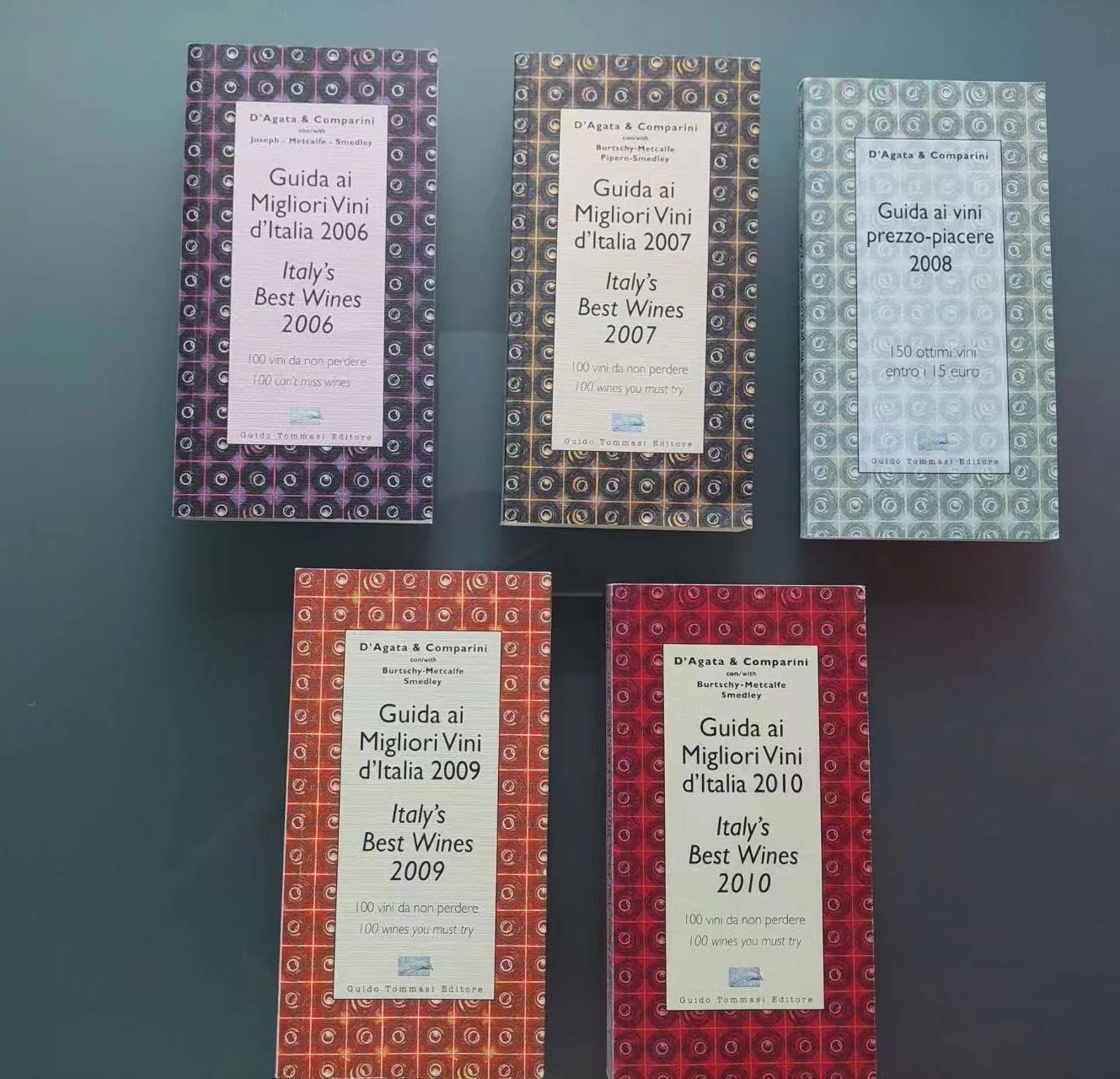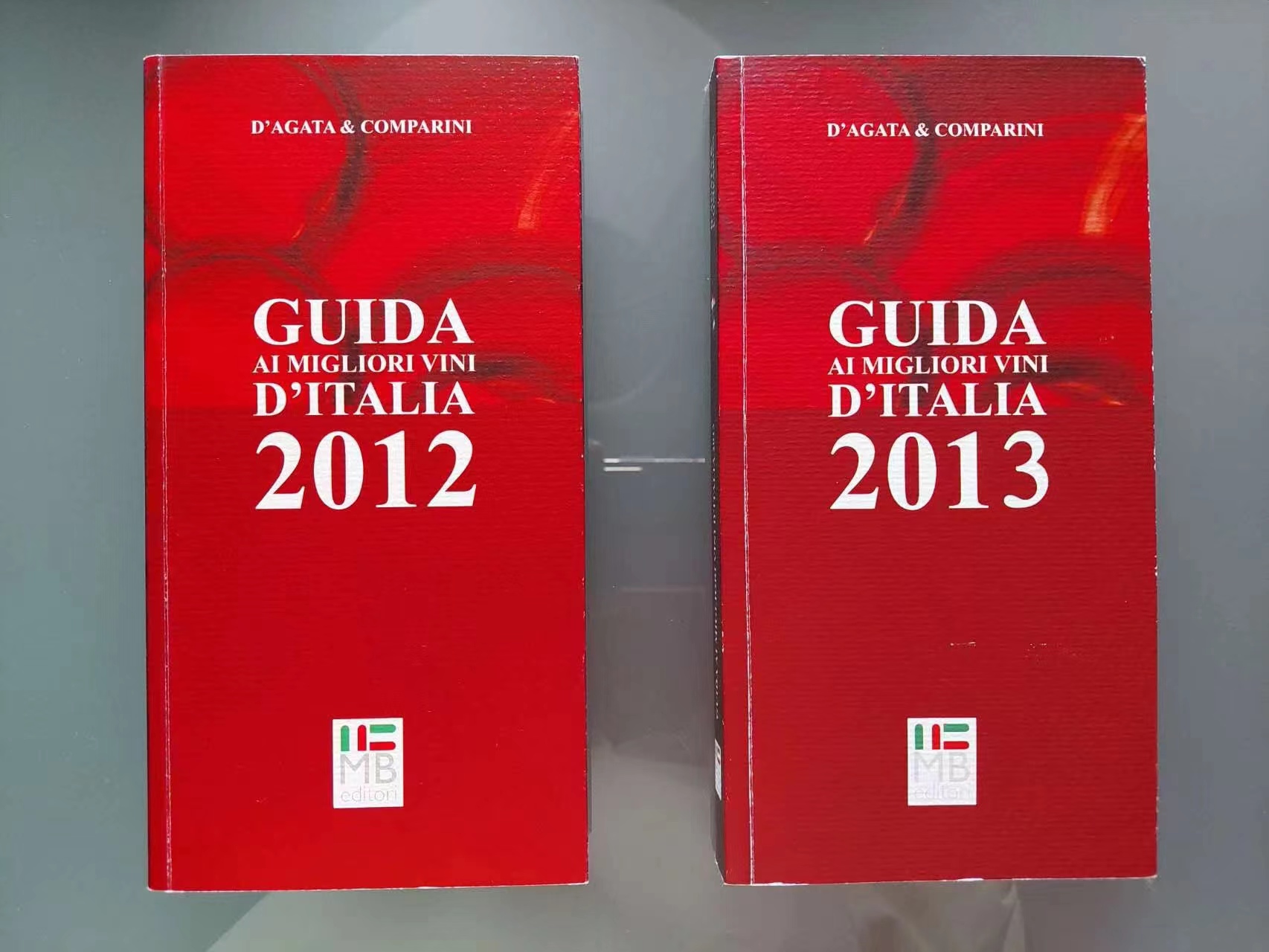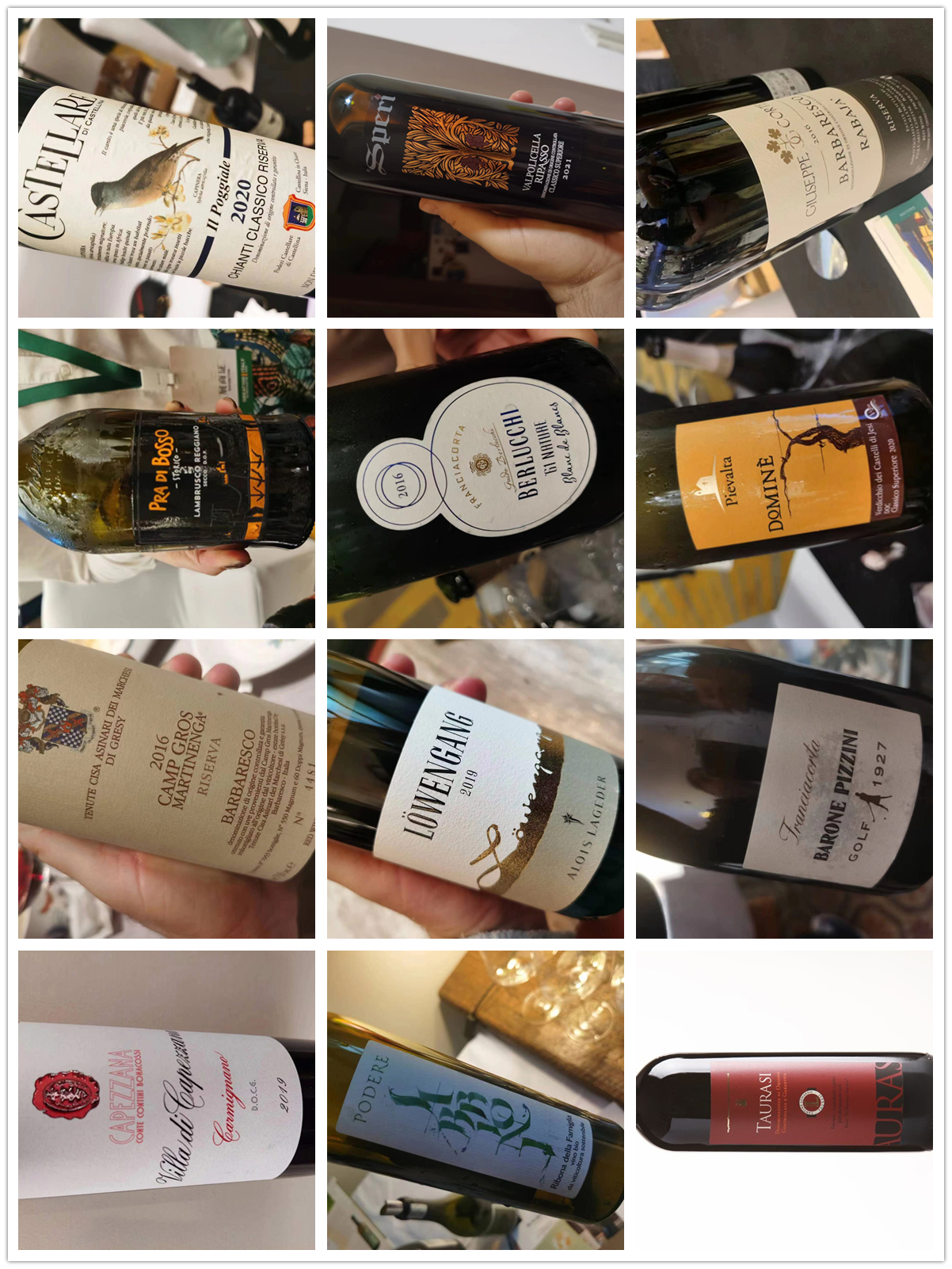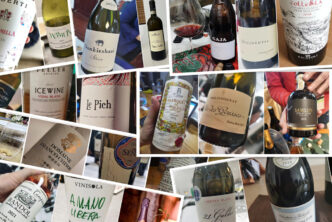It’s that time of the year again when I compile a list of the most memorable wines of Italy that I tasted in the previous twelve months. This is something I have been doing since at least 2004, when I first published the now-iconic annual D’Agata & Comparini Guida ai Migliori Vini d’Italia (the D’Agata & Comparini Guide to the Best Wines of Italy) that used to be presented each November on the Saturday evening in front of over 100 wine producers in the main theatre of Merano during the heart of the Merano Wine Festival. So what follows here is my list of Italy’s top wines of 2023, or, at the very least, those wines that I think stood out specifically in this year.

What I mean by that is that my “end of year” wine lists broach a “relative best”, rather than an “absolute best”. For as is always the case with my “Wines of the Year” lists, my goal is not to give readers a laundry list of what might be, in my opinion, the supposedly “best” wines of the year. That would entail, for Italy. writing up a list containing at least eighty Barbaresco, Barolo, Brunello, Bolgheri, and Amarone wines and little else with which to reach that 100 milestone. What’s the point in that? By contrast, the intent is to give my readers hopefully useful information on roughly 100 wines (usually a few more than that) that, for one reason or another, are worth seeking out. These are not necessarily the most expensive wines, or the most famous, or the most collectible. And should you find yourself in the group of those who believe that a Grignolino or Zibibbo wine cannot, and never will be, as good as a Barolo or a Brunello, then many of the wines in the list you have here are not even the “best” on an absolute scale of goodness. But I have always thought that to be a mistaken way of thinking and looking at things. Is Monet a more important and influential Impressionist than Sisley and Pissarro? Yes, surely. But is the worst Monet artwork really better than the best work by Pissarro and Sisley? Not. It’s the same with wine. A Prosecco wine such as that made by Silvano Follador, or one of the fantastic Zinfandel wines made by Gregory Perucci at Felline are far better than a majority of Barolos and Brunellos made from very poor sites (rather conveniently, Italy has never implemented a quality scale of its vineyards).
And so, I repeat: all the wines that you will read in the following “Ian D’Agata’s Italian Wines of 2023” list are remarkably good wines, all of which convey the nuances of a specific grape variety, or of an exposure or a soil or an altitude or a microclimate or a history or a tradition particularly well. In brief, wines that have important stories to tell.
To put all that in different words, just as I have had numerous occasions to write before, my goal is never to provide a laundry list of famous and expensive names only, but wines that speak clearly of their grape variety and/or of their other terroir parameters, while providing great value for money. Though they please you at different levels and for different reasons, inexpensive Bellone and Lambrusco Montericco and Susumaniello wines can be just as memorable as a Barbaresco Riserva and Bolgheri wines, for example. The beauty of Italian wine is just how varied and exciting it is: varied and exciting because of the many facets Italy’s many native and international grapes offer wine lovers and the magnificent wines competent wine people can make with them.

Some judging parameters for you to better understand
Below is an excerpt of something I first wrote years ago, and by which I, unfailingly, still stand today. “When I taste and score wines, I look for details: how true to type is the grape’s name on the label with respect to the wine in the bottle? Is this wine really typical of the vintage conditions it was made in? Does it really speak of the place they say it comes from? And so forth… And to be able to do that, you need an immense amount of wine knowledge: just tasting dozens or even hundreds of wines a year won’t cut it”.
In 2023, I spent slightly more than four months visiting about a hundred Italian wineries and tasted thousands of the country’s wines. My work rhythms actually get so crazy sometimes that you’d be surprised how many times I have to get up at three or four o’clock in the morning just to finish a series of wines that need evaluation in order to make my writing deadlines. So yes, I take my job very seriously.
For my 2023 Italian wine list I have carefully selected about one hundred and thirty of what I believe were the most memorable wines of the year. Sixty-two wines in the list I had already selected for the annual GREAT 100 Terroir Wineries of Italy show that was held this past July in Shanghai. It is an important wine show that I created for TasteSpirit and the TerroirSense Wine Review ; it is the biggest such event devoted to quality Italian wines in China, and it is frequented by all the most important wine professionals in the country, and most of the winery owners or top personnel are present. But besides the sixty-two wines that I had already chosen to be part of this year’s event (I refused entry to about fourteen wineries), another sixty spots were allotted to wines that struck me as being particularly noteworthy through the many multiple tastings I carried out in Italy this year. And once again, this 2023 list encompasses my usual mix of wines that are well-known, not well-known, and not well-known at all.
Allow me one last parting comment, one that I have also written before, but it’s values and importance still hold true today. “I hope you have fun with the list, even in agreeing to disagreeing with me (why not?) and that it might help you in your future purchasing decisions. For sure, I am always touched when sommeliers, wine importers, wine buyers, Food & Beverage managers and other wine professionals place their faith in me and the decades I have devoted to Italian wine, use my scores, quote me or anything else they may choose to do. That they should choose to use my work to help guide them in their life’s work, or just simply want to learn from it, so as to improve their Italian wine knowledge, well… it’s an honour, really”.
It sure is. Thank-you.
The wines in this tasting report
The wines in this report were released during 2023, though some might have been released for sale a little earlier (usually the year before). Most should be still available in the marketplace currently. Should you desire tasting notes to go along with the wine scores you will find below, I refer you back to the individual articles that have come out in the TerroirSense Wine Review in 2023 (most of the wines have been covered at one time or another in our various sections, be it the Wines of the Week or In the News or the Terroir Academy, Producer Insight and/or Regional Reports). Remember that this really is a “wines of the year” list, such that the wines of some territories and denominations will be much more prevalent than those of others, simply because those territories benefited from better weather than others, for example. Territories that had better weather and generally made better wines this year will be invariably more present in this list as opposed to the previous year, when weather in that part of Italy might have been poor. So fro example, there are a few more Barolos in this year’s list than last year’s just because both 2019 (Barolo) and 2020 (Barbaresco), the wines of which were released in 2023 are outstanding years. This was not the case last year for example, when the Barolos that went on sale were either of the 2018 vintage or 2017 (the Riservas), neither one of which will be remembered as memorable wines. And while there were undoubtedly many good 2018 Brunellos released this year, it is far to say that it was not an exceptional vintage and that is why you have fewer wines from that magical denomination in this year’s “Italian Wines of the Year” list. That will change of course with the 2019 Brunellos, spectacular wines thanks to a very good vintage, and therefore you can expect to find many 2019 Brunellos in my next year’s “Italian Wines of the Year” list.

IAN D’AGATA’S ITALIAN WINE OF THE YEAR in 2023
Contrade di Taurasi/Cantina Lonardo 2016 Taurasi Coste 100
Old vines and talent help deliver a wine that is at once powerful and graceful, a combination that is not easy to reach at any latitude, not just Italy. This magnificent red wine boasts depth, texture and complexity like few other red wines I tasted in 2023; should you be lucky to find a bottle, one or two sips later, you will come to the conclusion it is a wine you won’t soon forget either. Taurasi is potentially one of the world’s, not just Italy’s, greatest red wines, but it hasn’t always been given a chance to showcase all that it can really be. And yet the Aglianico grape variety is truly a noble one, with very little to envy Nebbiolo, Cabernet Sauvignon, Pinot Nero and Sangiovese. Furthermore, Taurasi’s terroirs are many and varied, allowing for noteworthy site-expression in each of its wines, depending on the commune’s territory from where the grapes are sourced. At Cantina Lonardi, also known as Contrade di Taurasi, they have a long history of making outstanding Taurasi wines: in fact, their “regular” Taurasi is usually excellent, and they also make a Taurasi Vigne d’Alto, a wine that in the 2016 vintage is not that inferior to the Taurasi Coste, if at all. Last but not least, this winery deserves credit and will be forever remembered by wine lovers everywhere for having resurrected the long-forgotten Roviello white grape (locally known as Grecomusc’), another in an incredibly long, mind-boggling list of unique and noble native wine grapes that Italy had, somewhat culpably, stopped paying attention to during the twentieth century. But its people like those at Cantina Lonardo that help set things right. And we are grateful.
IAN D’AGATA’S WINERY OF THE YEAR in 2023 (TIE)
Tua Rita (Sicily) and Planeta (Sicily)
Stefano Frascolla and his family are a true class act in Italian wine. Exactly the same thing can be said about Alessio Planeta, and his siblings Francesca and Santi. These individuals and their families have done a great deal for Italian wine.
It is fair to say that nobody had ever heard about Suvereto’s wines before Frascolla joined his mother-in-law, Rita Tua, at what was the extended family’s summer home and started making one head-turning wine after another at the Tua Rita winery. But it’s not just Tua Rita’s world-class Redigaffi wine (one of the world’s ten best Merlot wines) that can and will leave you speechless: Frascolla and his family’s talent are such that they make truly excellent, but much less expensive, wines from the Val di Cornia too, for example. And in so doing, they led a rebirth of this wine production area thanks to the spotlight they shone on it focusing the attention of wine lovers everywhere on a wine-producing area they had probably never heard of before. This year’s set of wines made by Tua Rita is one of their best ever: you literally cannot go wrong with anything that you will buy.
Over at Planeta, they made their name with international varieties such as Chardonnay, a wine that conquered important market shares wherever it was sold. But Planeta’s contribution to Italian wine is that they did not fossilize in their ways; over the years, they experimented with the different grapes and invested in once-forgotten areas. An example of the latter is Sicily’s northeast (home to Mamertino, one of Julius Caesar’s favourite wines) but they also took up making delicious wines such as Moscato di Noto/Noto Passito, one of only two denominations in Sicily devoted to Moscato Bianco (and not Zibibbo or Muscat of Alexandria). Wines such as those are hardly going to pay the bills, given the paltry volumes they are made in: but just having an important wine name like Planeta supporting such wines by moving into the area draws attention to the area ad its wines, inevitably leading the locals to not throw in the towel out of despair but rather to persevere, in the no longer wishful thinking of a better tomorrow. And as far as experimenting goes, the incredible success of Fiano in Sicily carries, and will carry, the Planeta stamp for posterity, indelibly. The 2021 Cometa, Planeta’s Fiano wine, is absolutely splendid; you will find one taste speaks louder than any words I may write. But the whole Planeta range of wines released in 2023 is something else: from the Etna wines to their Frappato Vittoria and Cerasuolo di Vittoria wines and others, you can’t go wrong.
Tutti molto bravi davvero.
Ian D’Agata’s Italian Wines of the Year 2023
100 points
Contrade di Taurasi/Lonardo 2016 Taurasi Coste (Campania)
99
Giacomo Conterno 2019 Barolo Riserva Monfortino (Piedmont)
98
Tua Rita Redigaffi 2021 Toscana Rosso (Tuscany)
Bruno Giacosa 2019 Barbaresco Rabajà (Piedmont)
Quintarelli 2015 Amarone della Valpolicella Classico (Veneto)
97
Aldo Conterno 2019 Barolo Bussia Romirasco (Piedmont)
Fontanavecchia 2018 Aglianico del Taburno Riserva Vigna Cataratte (Campania)
Gravner 2013 Ribolla Venezia Giulia (FVG)
Masi 2016 Amarone della Valpolicella Campolongo di Torbe (Veneto)
Miani 2020 Ribolla Gialla Pettarin Friuli Colli Orientali (FVG)
96
Argiano 2019 Solengo Toscana (Tuscany)
Arnaldo Rivera 2019 Barolo Cannubi(Piedmont)
Benanti 2018 Pietra Marina Etna Bianco Superiore (Sicily)
Diego Morra 2019 Barolo San Lorenzo di Verduno(Piedmont)
Donnafugata 2019 Passito di Pantelleria Ben Ryé (Sicily)
Fattoria La Rivolta 2022 Coda di Volpe Sannio (Campania)
Giuseppe Cortese 2016 Barbaresco Rabajà Riserva (Piedmont)
Marchesi di Gresy 2016 Camp Gros Martinenga Barbaresco Riserva (Piedmont)
Radikon 2018 Jakot Venezia Giulia (FVG)
Roagna 2017 Barbaresco Montefico (Piedmont)
95
Antano Milziade 2017 Sagrantino Passito (Umbria)
Berlucchi 61 2016 Franciacorta Nature Blanc de Blancs (Lombardy)
Ca’ del Bosco 2013 Franciacorta Riserva Annamaria Clementi (Lombardy)
Capezzana 2019 Villa di Capezzana Carmignano (Tuscany)
Castello di Ama 2020 Chianti Classico Gran Selezione Bellavista (Tuscany)
Castiglion del Bosco 2016 Zodiac Rabbit Brunello di Montalcino Riserva (Tuscany)
Contrada Salandra 2020 Falanghina Campi Flegrei (Campania)
Di Prisco 2015 Taurasi (Campania)
Domini Castellare di Castellina 2020 Chianti Classico Riserva Il Poggiale (Tuscany)
Elvio Cogno 2019 Barolo Ravera (Piedmont)
Emidio Pepe 2021 Cerasuolo d’Abruzzo (Abruzzo)
Felline 2028 Zinfandel Primitivo di Manduria (Puglia)
Ferrari 2012 Trento Extra Brut Giulio Ferrari Riserva del Fondatore (Trentino)
Fletcher 2020 Barbaresco Faset (Piedmont)
Grifalco 2021 Grifalco Aglianico del Vulture (Basilicata)
Il Poggione 2018 Brunello di Montalcino (Tuscany)
Passopisciaro 2021 Contrada G Terre Siciliane (Sicily)
Tenuta di Trinoro 2020 Tenuta di Trinoro Toscana Rosso (Tuscany)
Tenuta San Guido 2020 Sassicaia Bolgheri Sassicaia 2020 (Tuscany)
Tiberio 2022 Cerasuolo d’Abruzzo (Abruzzo)
Viberti 2016 Barolo La Volta Riserva (Piedmont)
94
Albert Vevey 2021 Vino da Uve Stramature Blanc Flapì (Valle d’Aosta)
Alois Lageder 2019 Chardonnay Löwengang Alto Adige (Alto Adige)
Bocale 2017 Montefalco Sagrantino (Umbria)
Brigaldara 2018 Cavolo Amarone della Valpolicella (Veneto)
Bucci 2020 Verdicchio dei Castelli di Jesi Riserva Villa Bucci (Marche)
Canalicchio di Sopra 2018 Brunello di Montalcino Vigna Montosoli (Tuscany)
Colacicchi 2020 Torre Ercolana Lazio Rosso (Lazio)
Doro Princic 2021 Malvasia Collio (FVG)
Fattoria Selvapiana 2019 Chianti Rufina Riserva Terraelectae Vigneto Erchi (Tuscany)
Feudo Montoni 2018 Nero d’Avola Vrucara Sicilia (Sicily)
Fratelli Alessandria 2019 Barolo San Lorenzo di Verduno (Piedmont)
Frescobaldi Tenuta Castel Giocondo 2017 Ripe al Convento Brunello di Montalcino Riserva (Tuscany)
G.B. Burlotto 2022 Verduno Pelaverga (Piedmont)
Gianpaolo Colutta 2019 Tazzelenghe Friuli Colli Orientali (FVG)
Giovanni Sordo 2019 Barolo Monprivato (Piedmont)
La Contrada di Sorano 2019 Barolo (Piedmont)
Luigi Einaudi 2019 Barolo Cannubi (Piedmont)
Lungarotti 2018 Rubesco Torgiano Rosso Riserva Vigna Monticchio (Umbria)
Maeli 2016 Moscato Fior d’Arancio Diloro Colli Euganei Vino Passito (Veneto)
Marcarini 2019 Barolo del Comune di La Morra (Piedmont)
Mauro Molino 2019 Barolo La Serra (Piedmont)
Montevetrano 2020 Montevetrano Colli di Salerno Campania (Campania)
Piero Brunet 2022 Blanc de Morgex et La Salle (Valle d’Aosta)
Planeta 2021 Cometa Menfi (Sicily)
Poderi Gianni Gagliardo 2019 Barolo Lazzarito Vigna Preve (Piedmont)
Santadi 2020 Rocca Rubia Carignano del Sulcis Riserva (Sardinia)
Sartarelli 2020 Balciana Verdicchio dei Castelli di Jesi Classico Superiore (Marche)
Sesta di Sopra 2018 Magistra Brunello di Montalcino (Tuscany)
Silvano Follador 2022 Valdobbiadene Prosecco Superiore Extra Brut (Veneto)
Tamburino Sardo 2021 Custoza Adriano (Veneto)
Tedeschi 2015 La Fabriseria Amarone della Valpolicella Classico Riserva (Veneto)
Tenuta Santa Maria 2020 Recioto della Valpolicella Classico (Veneto)
Venissa 2019 Venusa Bianco Veneto (Veneto)
Vinzas Arzas 2020 Ghirada Garaunele 1920 Rosso Barbagia (Sardinia)
93
Antonio Mele 2022 Granatza Cuculia Barbagia Bianco (Sardinia)
Barone Pizzini NV Golf 1927 Franciacorta Brut (Lombardy)
Buglioni 2019 Il Narcisista Recioto Valpolicella Classico (Veneto)
Casato1922 2020 Garganega Sassi Mori Verona (Veneto)
Cave Mont Blanc de Morgex et La Salle 2016 Blanc de Morgex et La Salle Metodo Classico Brut Nature Cuvée du Prince (Valle d’Aosta)
Crivelli 2022 Ruché di Castagnole Monferrato (Piedmont)
Di Barrò 2022 Mayolet Vallée d’Aosta (Valle d’Aosta)
Gian Luca Colombo-Segni di Langa 2022 Verduno Pelaverga (Piedmont)
La Montagnetta 2021 L’Altra Freisa d’Asti (Piedmont)
Primosic 2018 Ribolla Gialla Riserva Collio (FVG)
Malvirà 2019 Roero Arneis Renesio (Piedmont)
Marchesi di Barolo 2018 Barolo Sarmassa (Piedmont)
Marchesi Incisa della Rocchetta 2021 Grignolino d’Asti (Piedmont)
Montecappone 2020 Verdicchio dei Castelli di Jesi Riserva Utopia (Marche)
Paolo Saracco 2022 Moscato d’Asti (Piedmont)
Podere Sabbioni 2021 Ribona della Famiglia Colli Maceratesi (Marche)
SorPasso 2020 Carema (Piedmont)
Speri 2021 Valpolicella Ripasso Classico Superiore (Veneto)
Tenuta Garetto 2021 Grignolino d’Asti Giassa’ (Piedmont)
Tommasi 2018 Amarone della Valpolicella Classico (Veneto)
92
Argiolas 2022 Nasco di Cagliari Iselis (Sardinia)
Castello di Verduno 2022 Verduno Pelaverga (Piedmont)
Ettore Germano 2016 Alta Langa Blanc de Blancs Riserva Pas Dosé (Piedmont)
Fantinel Tenuta Sant’ Helena 2021 Pinot Bianco Collio Bianco (FVG)
Feudi del Pisciotto 2020 Nero d’Avola Versace Terre Siciliane (Sicily)
Gralò 2016 Franciacorta Brut Satèn (Lombardy)
Mertzeoro 2021 Cannonau Ghirada Baduorane Barbagia Rosso (Sardinia)
Nino Franco 2021 Primo Franco Valdobbiadene Prosecco Superiore (Veneto)
Pasqua 2018 Famiglia Pasqua Amarone della Valpolicella (Veneto)
Pietraventosa 2021 Primitivo Allegoria Primitivo Gioia del Colle (Puglia)
Ridolfi 2018 Brunello di Montalcino (Tuscany)
Tasi 2019 Valpolicella Superiore (Veneto)
Tenuta del Travale 2022 Nerello Cappuccio Rosato Epicarma (Calabria)
Tenuta Pradase -Valdo 2019 Prosecco Superiore Brut Metodo Classico (Veneto)
Villa Sandi 2021 Valdobbiadene Superiore di Cartizze Brut Vigna La Rivetta (Veneto)
Villa Canestrari 2020 Phanos Amarone della Valpolicella (Veneto)
Vinisola 2021 Zibibbo Zefiro Pantelleria Bianco Secco (Sicily)
91
CasalFarneto 2022 Rosae Lacrima di Morro d’Alba (Marche)
Casali 2022 Pra di Bosso Lambrusco Reggiano (Emilia Romagna)
Colle Manora 2020 Albarossa Ray Piemonte (Piedmont)
Folonari Tenute 2019 Baia al Vento Bolgheri Superiore (Sardinia)
Francesco Cadinu 2020 Ghirada Fittiloghe Cannonau di Sardegna (Sardinia)
Il Palagio di Panzano 2016 Chianti Classico Riserva Il Palagio di Panzano (Tuscany)
Marramiero 2021 Altare Trebbiano d’Abruzzo (Abruzzo)
Mevante 2019 Montefalco Sagrantino (Umbria)
Osvaldo Soddu 2020 Brulleri Cannonau Di Sardegna (Sardinia)
Parco dei Monaci 2019 Spaccasassi Moro Matera (Basilicata)
90
Apollonio 2020 Mani Del Sud Salice Salentino (Puglia)
Pievalta 2020 Dominè Verdicchio dei Castelli di Jesi Classico Superiore (Marche)
Carlo Gnavi 2020 Caluso Vigna Crava (Piedmont)
Il Casale Della Regina 2021 Lecinaro Frusinate (Lazio)
Mustazzavini 2022 Grillo Quasale Sicilia (Sicily)
Commenda Magistrale Primitivo del Salento Racemus (Puglia)
Le Strette 2021 Nascetta di Novello Pasinot (Piedmont)

 中文
中文




Dear Mr. d’Agata (maybe this thoughts are for you personally and not to share with the whole web:)
Congratulations on your 100 best Italian wines 2023, excellent selection. But above all I liked your preamble! The 100-point scale has bothered me for years, as it has serious flaws. Example: I’m a big fan of Vernatsch wines, and they have to be fruity, light, with a pleasant bitter almond note. However, because of the mainstream, some winemakers have started to over-power their wines in order to get more points. What a shame! And suddenly Amarone producers are now trying to make their wines light and fruity because wines are no longer allowed to be opulent. If I’m looking for something heavy, then I like Amarone, if something light, then Valpolicella/Vernatsch. And none of this fits into ONE scale! That’s why I made an attempt on my own years ago (never shared):
MY SCALE
1) There are 12 categories of wines: 1) light red wines, 2) full-bodied heavy 3) with appasimento/(heavy reads with rs) 4) fresh white wines without residual sweetness 5) with residual sweetness 6) full-bodied white wines without residual sweetness 7) with residual sweetness 8) red sweet wines 9) white sweet wines 10) fresh bubblers 11) full-bodied bubblers 12) rosati.
2. appellation and grape variety are known BEFORE the blind tasting and the classification into 1) -12) is determined (either by the winery or in advance by the taster).
3. then the blind tasting takes place with the background information from 2. 80 points are available, which are awarded in the following categories: Nose/aromatic breadth/complexitiy/length/food friendliness, drinkability/terroir and varietal typicity (20 points)/coherence and “faults”
4. the last 20 points are again open/non-blind: ecological and social assessment of the winery (10) and value for money (10).
5. The 10 Points split in 2, 4, 6, 8, 10 points.
For example, a wine for 3000 dollars would never receive more than 92 points, whereas a perfect Vernatsch from an organic winery could achieve 98-100 points (in its category).
I know, that’s relatively radical. What do you think?
Thanks again for all the knowledge you share with us.
Nickname Cayas ( –> a super Syrah from the Valais), from Switzerland (wine fan for over 30 years, especially Italy!, teacher of philosophy and German literature)
Translated with DeepL.com (free version)
Very interesting take on scoring!
Have to agree with your assessment of Amarone. I went to a walk around tasting last year and was quite disappointed. I love a deep, rich, opulent Amarone. If I want something lighter, I’ll go to a Ripasso or Valpolicella Superiore.
Agreed, I’m a big fan of richer Amarones, lighter Valpolicellas and Ripassos in the middle road. My pet peeve is Valpolicellas that are degerated into being something they are not. Happy holidays!
interesting take! You know, nothing in life is perfect, so neither are scoring systems. We just use what works for each of us, and hopefully allows us to have even more fun we with wine. Cheers, happy holidays!
Of your annual “list” we always appreciate the rare humility with which you explain how it is conceived and your NON-claim to express absolute values.
We will try to make the most of it and also try some of the little-known labels that you have the merit of bringing to the fore.
Thanks Bands and congratulations for the great wines at Donnafugata!